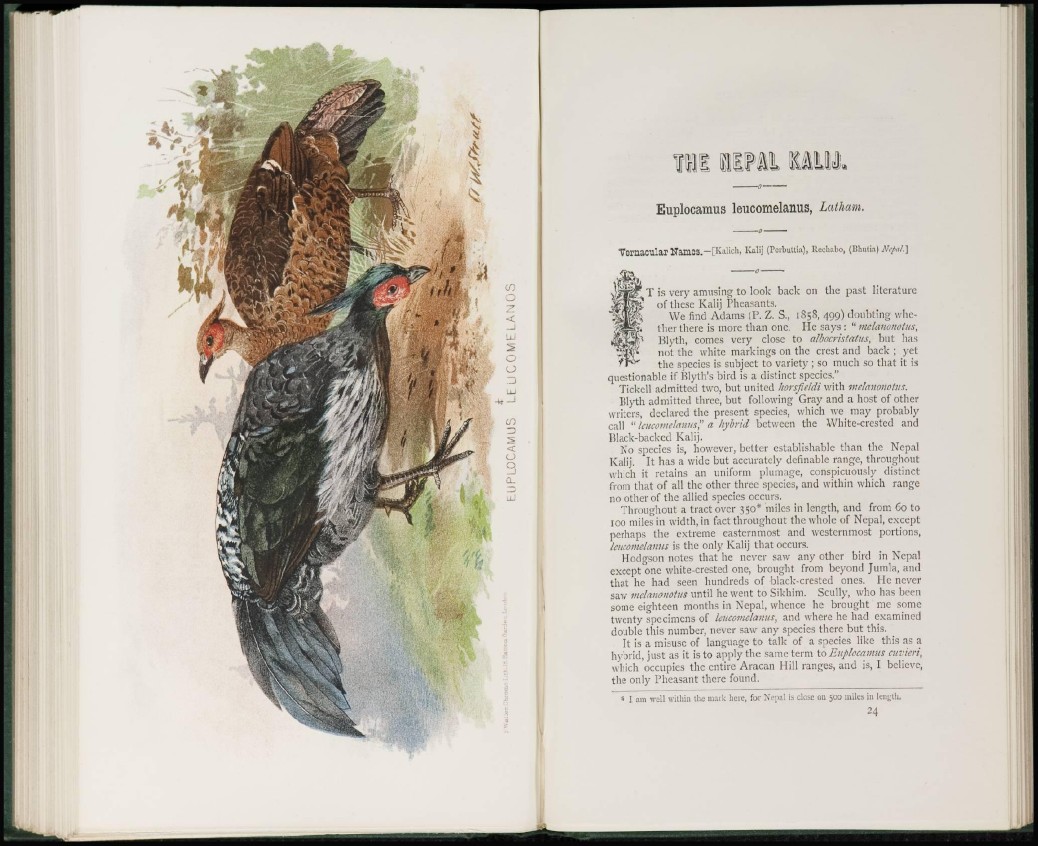
CO
o
<
LU
Euplocamus leucomelanus, Latham.
Vernacular Nam03.—[Knlich, Kalij (Perbuttia), Rechabo, (Ehutia) Nr/ial.]
T is very amusing to look back on the past literature
of these Kalij Pheasants.
We find Adams (P. Z. S., 1S5S, 499) doubting whether
there is more than one. He says : " melanonotus,
Blyth, comes very close to albocristatus, but has
not the white markings on the crest and back ; yet
the species is subject to variety ; so much so that it is
questionable if Blyth's bird is a distinct species."
Tickcll admitted two, but united horsfieldi with melanonotus.
Blyth admitted three, but following Gray and a host of other
writers, declared the present species, which we may probably
call " leucomelanus" a hybrid between the White-crested and
Black-backed Kalij.
No species is, however, better establishablc than the Nepal
Kalij. It has a wide but accurately definable range, throughout
which it retains an uniform plumage, conspicuously distinct
from that of all the other three species, and within which range
no other of the allied species occurs.
Throughout a tract over 350* miles in length, and from 60 to
100 miles in width, in fact throughout the whole of Nepal, except
perhaps the extreme easternmost and westernmost portions,
leucomelanus is the only Kalij that occurs.
Hodgson notes that he never saw any other bird in Nepal
except one white-crested one, brought from beyond Jumla, and
that he had seen hundreds of black-crested ones. He never
saw melanonotus until he went to Sikhim. Scully, who has been
some eighteen months in Nepal, whence he brought me some
twenty specimens of leucomelanus, and where he had examined
double this number, never saw any species there but this.
It is a misuse of language to talk of a species like this as a
hybrid, just as it is to apply the same term to Euplocamus cuvieri,
which occupies the entire Aracan Hill ranges, and is, I believe,
the only Pheasant there found.
* I am well within the mail; here, for Nepal is close on 500 miles in length,